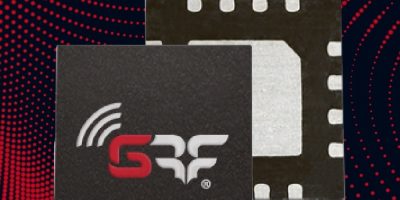Believed to be the industry’s first high resolution, industrial quality, indirect time-of-flight (iToF) module for 3D depth sensing and vision systems, the ADTF3175 has been announced by Analog Devices.
It enables cameras and sensors to perceive 3D space in 1Mpixel resolution for accurate (+/-3mm) iToF technology. It is suitable for use in a range of machine vision applications ranging from industrial automation to logistics, healthcare and augmented reality.
The ADTF3175 offers designers a scalable, fully engineered and calibrated depth system that can be integrated into 3D sensing and vision systems, eliminating the need to design specialised optics or address electromechanical integration challenges. It accelerates time to market by simplifying the complex sensor design process, said Analog Devices. The robust, high resolution module is specifically designed to perform in a range of environmental settings. It uses triple junction vertical cavity surface emitting laser (VCSEL) technology from Lumentum Operations to enable sensing in a wide range of lighting conditions.
“We are thrilled to work with ADI on solutions for the industry’s most demanding and highest resolution 3D sensing applications, ranging from extended reality to industrial applications like robotics, intelligent buildings, and logistics systems,” said Téa Williams, senior vice president and general manager of 3D sensing at Lumentum. The company provides VCSEL arrays for light detection and ranging (lidar) and 3D sensing applications, to enable sensing in a range of lighting conditions. “Our 10W VCSEL arrays allow ADI to enable more capable sensing and vision systems that can operate under a wide range of lighting conditions and thereby removing environmental obstacles to broader and more rapid machine vision deployment,” Williams added.
The ADTF3175 features an infra red illumination source with optics, laser diode and driver, and a receiver path with a lens and an optical band-pass filter. The module also includes flash memory for calibration and firmware storage with power regulators to generate local supply voltages. It is supplied pre-programmed and offers operating modes optimised for long and short range, said Analog Devices.
“Machine vision needs to make the leap to perceiving smaller, more subtle objects faster in industrial environments that often include harsh conditions and multiple stimuli,” explained Tony Zarola, senior director for ToF at Analog Devices. “The ADTF3175’s . . . . resolution and accuracy allows vision and sensing systems – including industrial robots – to take on more precision-oriented tasks by enabling them to better understand the space they’re operating in and ultimately improve productivity“. The module is expected to accelerate the deployment of next generation automation and critical logistics systems, he added.
Analog Devices also offers an accompanying open source design for the ADTF3175 module. It includes all of the required drivers and access to ADI’s depth processing capabilities. ADI also offers guidance on how to achieve Class One eye safety certification for the end product.
The module measures 42 x 31 x 15.1mm.







